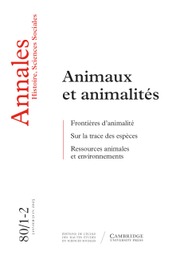Article contents
Du roi magique au « roi divin »
Published online by Cambridge University Press: 11 October 2017
Extract
Depuis que Frazer a rapproché les premiers rois de Rome des potentats barbares d'Afrique et d'Asie, le problème posé par la nature du « roi divin » n'a guère avancé vers sa solution, malgré l'accumulation de données ethnologiques nouvelles. En étudiant l'ensemble des tabous qui réglementent le comportement des chefs, des rois et des prêtres des sociétés tribales, ainsi que celui de leurs sujets à leur égard, l'auteur du Rameau d'Or avait envisagé le phénomène sous l'angle permettant d'en apercevoir les aspects les mieux définis et donc les plus aptes à en livrer l'explication. Paradoxalement, toutefois, une telle approche, féconde en ellemême, a contribué à « bloquer » le problème : les comportements observés par les membres de la société à l'égard des souverains, qu'ils n'osent ni toucher ni regarder, comme si de leur présence émanait un inexprimable danger — indiqueraient, selon les conceptions ethnologiques courantes, que ces personnages appartiennent à la sphère distante et séparée du « sacré ».
- Type
- Anthropologie et Histoire
- Information
- Copyright
- Copyright © Les Éditions de l’EHESS 1970
References
Bibliographie
- 3
- Cited by


